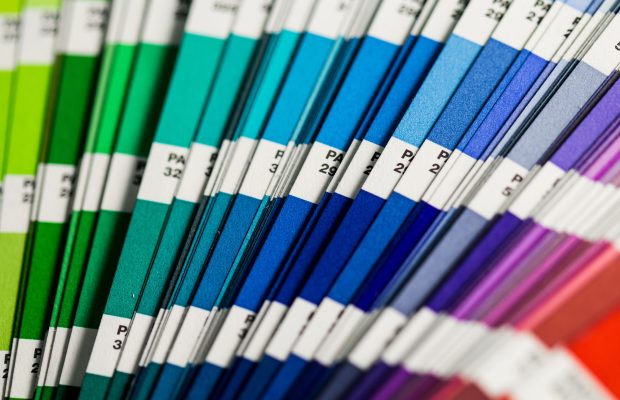Did you know there are more than half a million fonts? When you are presented with this much choice, finding the best fonts for your website can look like a near impossible task. Serif or sans serif? Bold or light? Do I make my headings a different colour to my body text? There are many questions to ask, and you need to answer them all to have a successful outcome, providing users of your site with a pleasant experience. However, there are a few things you can do to make this choice a lot easier. Here are just some of the many things we keep in mind at Webmad when choosing fonts for a client.

Digital Marketing, Websites.
How to choose the right fonts for your website
So many fonts – how do I pick the right one?
The basics of typography
We need to start by laying some ground rules. What is the difference between a font and a typeface? Well in their most literal senses, a typeface is a complete set of characters with a common design ethos, while a font is a typeface with a specific weight, size, and style. So, what does this mean exactly? This would mean that, as an example, Times New Roman would be a typeface, whereas Times New Roman at a bold weight, sized at 25 point and coloured blue would be a font. Now when someone says Comic Sans is their favourite font, you can correct them and tell them – “Well actually it’s your favourite typeface.” There are some other terms used to describe the styling of fonts that I will briefly cover here: Line height is the vertical distance between lines of type, measured from baseline to baseline. Tracking is the spacing between characters when applied to an entire piece of text, whereas kerning is the spacing between individual letters or characters. Weight is how heavy the font appears – for example, light, medium or bold. With all of these fundamentals combined together you have a huge control over the look and feel of a typeface, and this can translate directly into your website.
Serif vs Sans Serif
The big question you might ask yourself when first picking a typeface: to serif or not to serif? For those who don’t know, serifs are the little strokes attached to the end of a letter. An example of a serif typeface would be Times New Roman. Sans serif comes from the French word sans meaning ‘without’ so sans serif typefaces are ones without serifs. An example of this would be Helvetica. There are more categories of typefaces than these two, but the large majority of them fit directly into either serif or sans serif. When you are selecting a typeface for your website, this should be the first question you ask yourself. And before you find your answer you should know, there is no correct one. No matter what choice you make, there are typefaces on both sides of the serifs that are great choices for every occasion. As a general rule of thumb, however, serif fonts generally convey ideas of tradition, establishment and trust whereas sans serif fonts are more modern approachable and clean. This isn’t a catch-all rule though so if you’re needing help finding the right match make sure you get help from the experts!
Proin tempor, enim quis gravida vestibulum, dui ante lobortis tellus, eu dictum metus mi sed nisi. Mauris pulvinar tristique diam et placerat. Sed condimentum dignissim tortor ac eleifend. Quisque mattis erat ut ligula venenatis, eget facilisis est aliquet. Quisque eleifend posuere turpis, vitae mattis mauris auctor ac. Donec tristique convallis fringilla. Duis ac volutpat mauris.
Current font trends
The world of design is constantly changing and evolving, and typography is no different. There is a large trend currently that focuses on vintage, nostalgic fonts. These can be split into a few different categories: First of all is the vintage narrow serifs. These take inspiration from the peak of print fashion magazines in the 80’s, when typefaces that were tall and narrow were favoured. Art deco is also making a massive revival. Typefaces like Broadway that romanticise the glamour of the 1920s are experiencing a huge increase in popularity throughout the world. Some other styles to note are pixel fonts – reminiscent of old arcade games like Pacman and Space Invaders. Finally, Psychedelia, the styling reminiscent of the 60s and 70s and hippies (and, you guessed it, psychedelics) is also seeing a resurgence in pop culture. To summarize, typefaces that make people feel as though they are being transported to a different time in the past, whether it is one they directly experienced or only had the fortune of experiencing through media, are seeing a massive increase in popularity all through culture, whether it be print, film, web or software. If you can make users of your website feel that wave of nostalgia, you’re probably doing something right.
Similar posts
Software & App Development, Websites.
How much does a new website really cost in New Zealand?
If you’ve started looking into getting a new website built, you’ve probably noticed pricing is all over the place. One agency might quote $5000, another $30,000. The truth is, there’s no one-size-fits-all price when it comes to websites. The cost depends on what you need your site to do, how custom you want it, how future-proof it is and what level of support comes with it. But that doesn’t mean the website price has to be a mystery. Here’s a breakdown of what goes into new website design and build pricing in New Zealand, and how to make sure you’re investing wisely.
Read moreBranding & Design, Websites.
What is colour theory and what does it mean for your website?
So many colours to choose from, so how do you know what is the right decision to make? What might seem like an impossible task is something we have broken down here.
Read moreDigital Marketing.
How Can I Set Up and Use Google Analytics?
In today’s digital world, data is everything. Knowing how your website performs, where your traffic comes from, and what your visitors do on your site is crucial for making your informed business decisions...
Read moreLet's make something great together.
"*" indicates required fields
69 Corsair Drive, Wigram, Christchurch
PO Box 16760, Christchurch 8441



